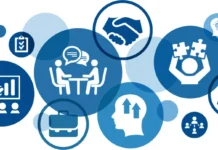by Michael J. Devereux II and Adam J. Herman, CPA/ABV/CFF, CVA, ASA
The Credit for Increasing Research Activities, also known as the Research & Experimentation (R&E) tax credit or Research & Development (R&D) tax credit, is a rewarding program of which plastics processors may take advantage to reduce their Federal (and in some cases State) income tax liabilities by investing in the development or improvement of their products or manufacturing processes.
Background
Many custom molders or extruders manufacture parts to the customers specification. Many times, the customers have designed the parts and the plastic processor must develop the manufacturing process to produce a part that meets those particular specifications. Therefore, there are many activities that plastic processors engage in that qualify for the Research Credit. Four requirements must exist for an activity to meet the definition of qualified research.1 Activities that may qualify for the credit include, but are not limited to, part design, mold design, process design (including manufacturing variables), resin experimentation, and overall process improvement initiatives.
In recent years, smaller and mid-size taxpayers have faced new challenges claiming and defending the R&E tax credit. These challenges have not been focused solely on the qualified nature of the activities for which credit is claimed, but rather the documentation supporting the qualified activities.
Plastics processors claiming the R&E tax credit should develop sound record-keeping procedures in order to ensure success upon an IRS or State Taxing Authority examination. By developing these procedures to amalgamate with existing engineering documentation, R&E tax credit documentation procedures may be introduced to an organization with little interruption to existing practices.
What Documentation is Required?
In order to successfully claim the R&E tax credit, taxpayers must be able to substantiate their qualified research expenditures. As required by Treasury Regulation §1.6001-1, taxpayers are required to keep such permanent books of account or records, including inventories, as are sufficient to establish the amount of gross income, deductions, credits, or other matters required to be shown by taxpayers.2
Absent the limited guidance found in Treasury Regulation §1.6001-1, taxpayers must look to Congressional intent, Treasury department guidance, and recent court cases that properly take into account the current Treasury regulations.
Congress continuously has stressed that eligibility for the Research Credit is not to be based upon unreasonable or unrealistic record-keeping requirements. The Proposed Treasury Regulations, quoting the Congressional committee report, states The conferees also are concerned about unnecessary and costly taxpayer record keeping burdens and reaffirm that eligibility for the credit is not intended to be contingent on meeting unreasonable recordkeeping requirements. 3
The Proposed Treasury regulations, in removing the research credit-specific record-keeping requirement, go on to state:
Treasury and IRS recognize that the research credit presents a particular burden for taxpayers because tracking eligible expenditures may necessitate taxpayers preparing and keeping records unlikely to be prepared or kept for other business purposes Treasury and the IRS have concluded that the failure to keep records in a particular manner (so long as such records are in sufficiently usable form and detail to substantiate that the expenditures claimed are eligible for the credit) cannot serve as the basis for denying the credit.4
Moreover, two recent court cases are noteworthy and have shed light on the type of documentation that is necessary to substantiate R&E tax credit claims. On March 10, 2009, the United States Tax Court released T.C. Memo. 2009-50 and ruled on several issues with respect to the Research Tax Credit under IRC §41 that have been contentious for taxpayers in recent IRS examinations. Two of the rulings focused on documentation and substantiation of qualified expenditures. The Court made it clear that time estimates in allocating time spent on qualified research is acceptable for both the year the credit is being claimed and the base years. In fact, the only qualified research expenditures allowed by the Court were based upon oral testimony of the employees performing the qualified research.
Similarly, on June 9, 2009, the Fifth Circuit Court of Appeals overturned the Southern District Court of Texas ruling in U.S. v. McFerrin. The Court vacated the judgment of the district court and remanded the case for further proceedings consistent with the Court of Appeals opinion. Like the Union Carbide case, the Fifth Circuit Court of Appeals addresses documentation requirements and substantiation of research credit claims.
The Goal of Creating Documentation Procedures for the Research Credit
Taxpayers who are creating documentation procedures must capture the information necessary to prove that qualified research is taking place, while connecting the employees that perform the qualified research to the activities themselves.
Business documents that many taxpayers already prepare as part of their engineering or reporting systems are the best place to begin. Many times, these documents including, but not limited to, drawings, designs, pictures, notes, emails, and meeting minutes create nexus to the employees performing the qualified research.
The ideal documentation for plastics processors to maintain includes the following:
- The details of the process of experimentation. Process of experimentation is defined as modeling, simulation, or systematic trial and error. The IRS often will request the step-by-step process that a taxpayer undertakes during its research. The more detailed the process is documented, the better.
- The alternatives that were considered. These alternatives may relate to the capability or methodology of developing the product or process; or could consist of design alternatives that were discarded in determining the best option. Taxpayers are encouraged to record both successful and unsuccessful alternatives. For purposes of the Research Credit, unsuccessful alternatives are as significant as the successful alternatives (if not more).
- The results of experimentation. Any reports, notes, or testing results help corroborate the research activities.
- Documents listing employees involved. Documents listing employees that are performing or supervising the research provide excellent nexus to the research activities that are performed.
- The amount of time spent on each research project by person. Calendars, time logs, or time cards provide excellent sources of the employees qualifying and non-qualifying activities.
- Formal job descriptions.
Considering that there are no specific guidelines, taxpayers may establish a documentation system that works within their existing processes.
Taxpayers claiming the credit must keep records that can substantiate their research credit claim. The IRS will require nexus to be drawn between the employee performing the qualified research and the activity itself. The type of documentation taxpayers should be keeping is often taxpayer-specific and, many times, can be built upon existing documentation procedures and business records.
For more information about the Research Credit or for assistance in developing record-keeping systems to substantiate Research Credit claims, contact Michael Devereux II or Adam J. Herman, CPA/ABV/CFF, CVA, ASA at (314) 862-2070 or by email at mdevereux@mppw.com.
1 See Inject Cash into your Bottom Line with the R&E Tax Credit in the Fall 2007 issue of Plastics Business for an explanation of the type of activities that qualify for the credit.
2 Treasury Regulation §1.6001-1 [as required by Treasury Regulation 1.41-4(d)]
3 H.R. Conf. Rep. No. 106-478, at 132 (1999)
4 Notice of Proposed Rule Making, Fed. Reg. Vol. 66. No. 247, p. 66362, 12/26/2001




